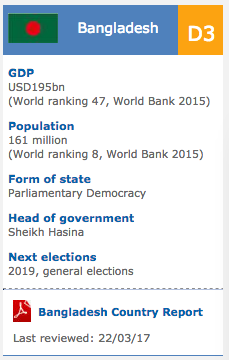Ghana: Ghana Agriculture Profile
2016/12/05

Overall prospects favourable for 2016 cereal production
In the South, harvesting of the initial season maize crop and planting of the second season crop have recently been completed. In the North, which only has one rainy season, harvesting of cereals is underway. Precipitation has been above last year’s levels in the southern part of the country with cumulative rainfall exceeding 200 % of the average in the coastal regions. Similarly, climatic conditions were generally favourable across the northern savannah agro-ecological zone. In addition, the continuation of Government assistance in the form of subsidized fertilizers and increased technical support for large-scale farming supported crop development throughout the season. Preliminary estimates point to an above average cereal production. Cereal production in 2016 is estimate at nearly 2.9 million tonnes, up 5 % from 2015. Maize output is estimate to increase by 5.6 %.
The 2015 cereal production was estimated at some 2.75 million tonnes, a slight decrease compared to the previous year’s and the average outputs. Maize production declined by 4 % compared to the 2014 level.
Food prices declined in recent months
Coarse grains prices have declined in recent months reflecting improved availabilities from the just-completed 2016 major season harvests in the southern parts of the country. Maize prices, for instance, dropped by 8 % from June to August, while prices of local rice declined by 5 %.
Cereal prices followed a steady upward trend in 2015, driven mostly by a steep depreciation of the national currency that caused the consumer price inflation rate to additional than triple over the last three years. Cereal production has been mostly stagnant in recent years, which has exacerbated the strong upward trend.
FOOD SECURITY SNAPSHOT
- Cereal production in 2016 forecast above average
-
Food prices on the decline, driven by increased supplies from new 2016 harvest in southern part of the country
- Ghana News
-
- AFGHANISTAN: UNWTO: International tourism – strongest half-year results since 2010
- BOTSWANA: Why governments need to support the financial sector to meet the unserved needs of smallholder farmers
- BOTSWANA: International Arrivals To Africa Reach More Than 18 Million In 2017
- BOTSWANA: Africa: USA-Africa - No Policy? Bad Policy? or Both?
- BOTSWANA: Africa: U.S. State Department To Get Experienced Diplomat in Key Africa Post
- BOTSWANA: Africa’s economic growth in 2016 was driven by East Africa
- Trending Articles
-
- SOUTH AFRICA: KPMG's South Africa bosses purged over Gupta scandal
- CHINA: Life after Rosneft deal: CEFC ambitions face debt, regulatory hurdles
- CHINA: BRICS countries considering own cryptocurrency as settlement mechanism
- ITALY: Italy Current Account Surplus Grows In June
- TANZANIA: Critic of Tanzania's Magufuli moved to Kenya for treatment of gunshot wounds
- NIGERIA: Nigerian Public Officials Collect N400b Bribe in One Year






.gif?1356023993)



